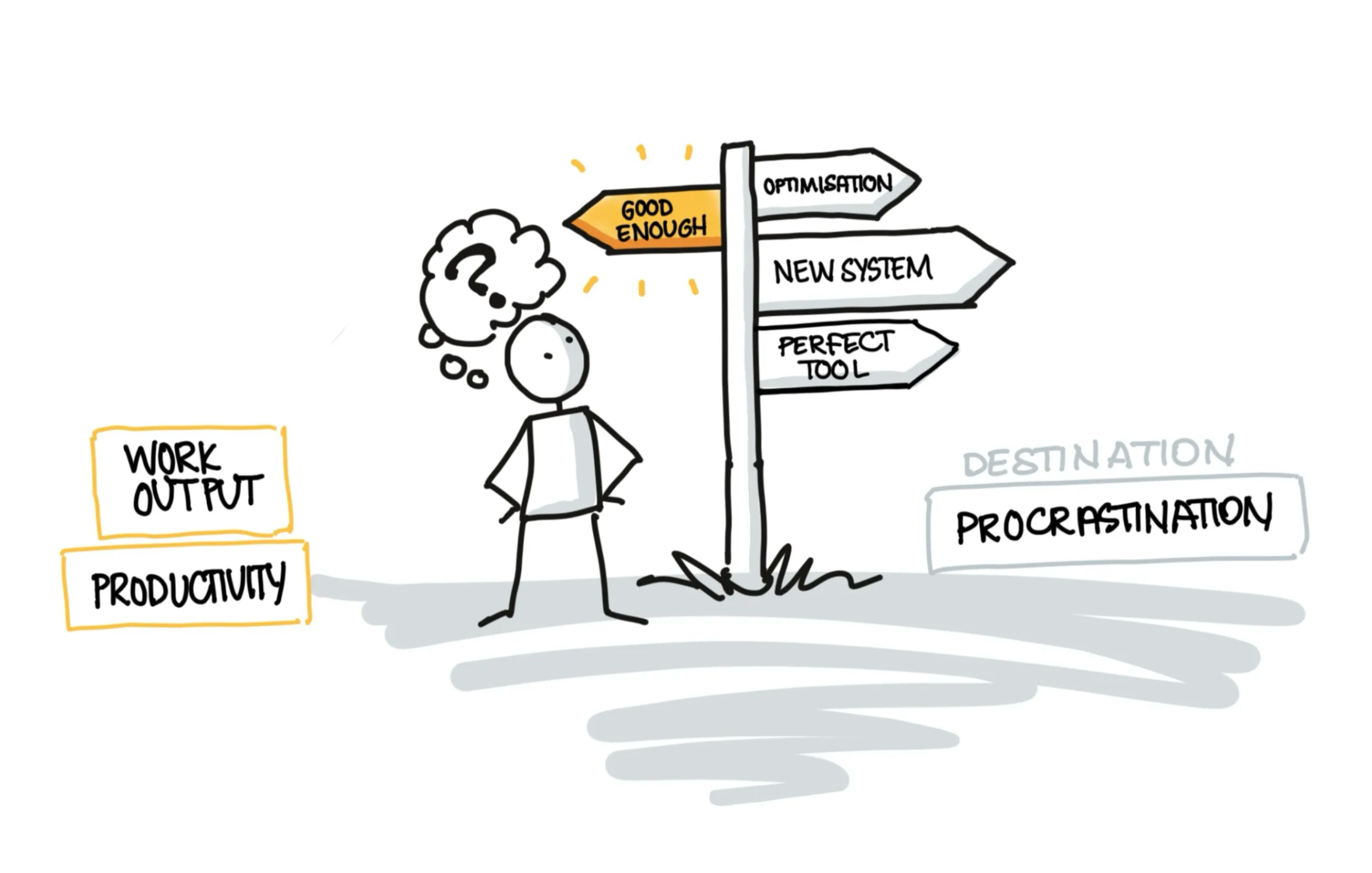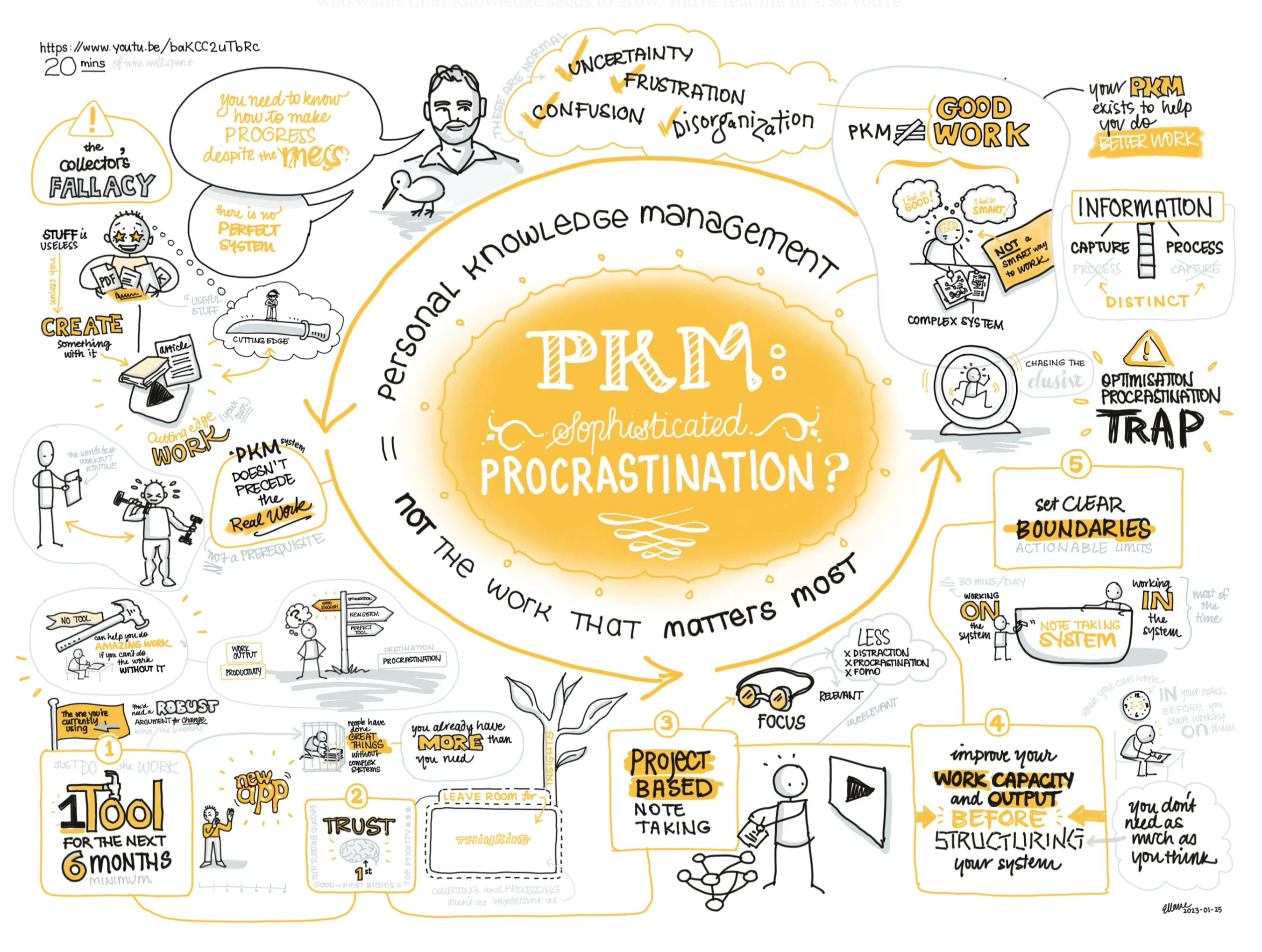
If you’ve been so busy shaping the fascia of your garden boxes you’ve neglected to nourish the seeds that should be growing there, it’s time for a change.
Yesterday I sketchnoted this 20-minute video about personal knowledge management (PKM).
Sam Matla is a business coach, writer, entrepreneur, and a very insightful fellow! Less than ten seconds into the video I could see he has a deep, personal understanding of why some of us continually work ON our systems instead of diving in and working IN the system.
Sam explains what PKM is, and what it is not. He describes the Optimisation Procrastination Trap and the Collector’s Fallacy, and outlines five clear principles that can help us focus on the relevant, and experience less distraction and less FOMO (fear of missing out) when faced with shiny new apps that promise you the universe on a plate.
My favourite of the five principles is number four:
Only when you can work in and with your notes for a solid 2–3 hours or more, on a regular basis, should you even think about structuring them. Sam is right when he says we don’t need as much structure as we often think we do.
Folders are one way of structuring knowledge; front matter, plugins, super tags and the like, are others.
My approach to knowledge management is analog-inspired, and I firmly believe that, used appropriately, folders are helpful ways of sorting information. This principle applies whether you’re using an AI-assisted notes app where you chuck it all in and the software serves it up to you in varying forms, or you’re more of a traditionalist, like me.
If you could take a peek inside my Obsidian vault, you’d see what looks like a highly structured setup. I use the four PARA folders, and quite a few more. Here’s the thing, though: those extra folders came about organically. They were created as a response to my need for grouping like files in my preferred way of working.
I’m convinced that shaping one’s PKM by copying my or anyone else’s structure, is almost always a fool’s game. Two things to remember: structure must be flexible, and it must be earned!
As Sam emphasises in his video, a well-oiled, complex PKM system is not a prerequisite for doing good work. There’s nothing wrong with collecting interesting things and processing them into your system, but all of that is worse than useless unless you actually create something with it.
Why worse than useless?
Because you’ve spent so much time shaping the fascia of your garden boxes, you’ve neglected to nourish the seeds that should be growing in them. Time is wasted, fruit withers, priceless opportunities are lost.
But that’s not going to be your future, because I’m certain you are someone who wants their knowledge seeds to grow. You’re reading this, so you’re actively looking for ways to put in the right kind of work.

As with all sketchnotes, they can look pretty, but they’re usually of more long term benefit to the creator than anyone else because of the mental work involved in processing the information into a visual form. This graphic was created as part of a Domestika sketchnoting course, and represents my personal perspective on the material.
💬 Comment on Mastodon · Medium · or by email
Follow my RSS feed, or sign up to receive posts in your inbox
If you get value from my work I invite you to share this post with someone you think will appreciate it, or to make a contribution to my support jar.